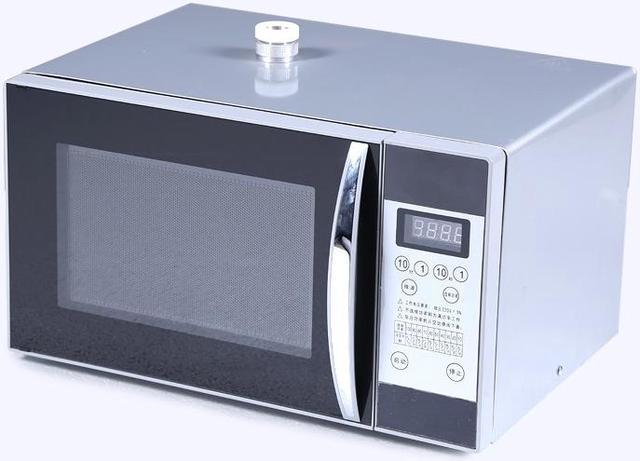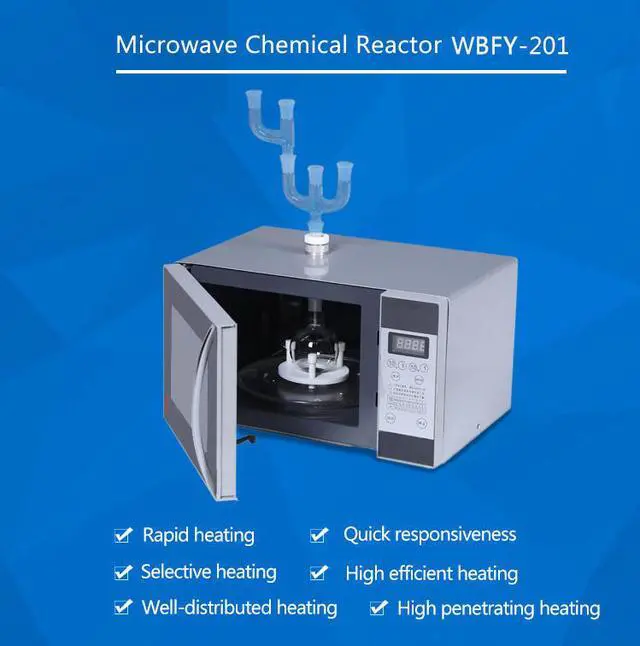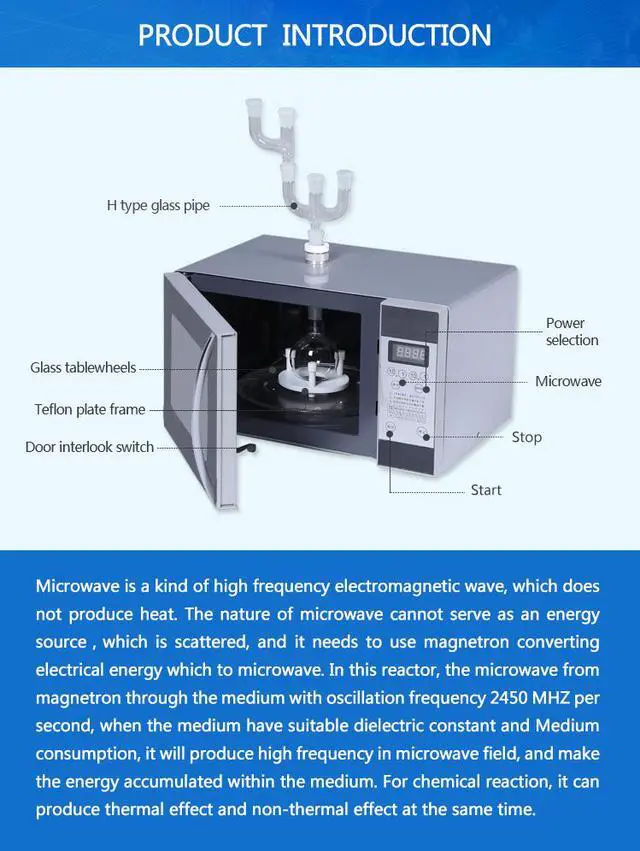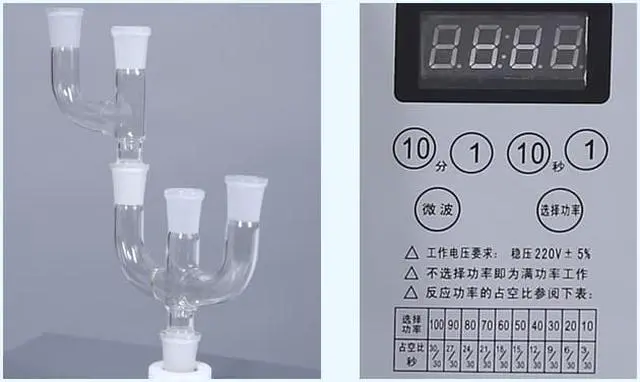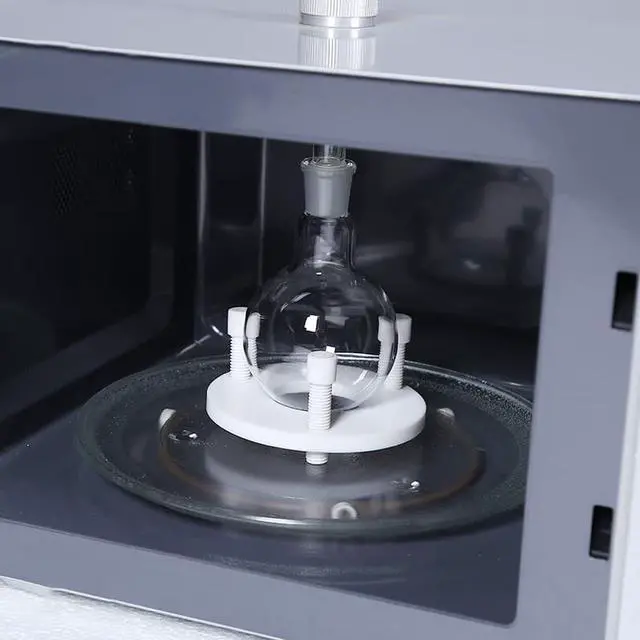Product Introduction Conventional heating usually involves the use of a furnace or oil bath, which heats the walls of the reactor by convection or conduction.
The core of the sample takes much longer to achieve the target temperature, e. g. when heating a large sample of ceramic bricks. Acting as internal heat source, microwave absorption is able to heat the target compounds without heating the entire furnace or oil bath, which saves time and energy. It is also able to heat sufficiently thin objects throughout their volume (instead of through its outer surface), in theory producing more uniform heating. However, due to the design of most microwave ovens and to uneven absorption by the object being heated, the microwave field is usually non-uniform and localized superheating occurs.
Features Microwave heating can have certain benefits over conventional ovens: reaction rate acceleration milder reaction conditions higher chemical yield lower energy usage different reaction selectivities Microwave chemistry is applied to organic chemistry and to inorganic chemistry.
